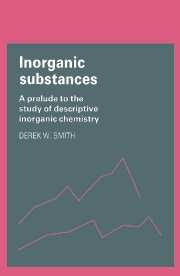2 results in Cambridge Texts in Chemistry and Biochemistry

Inorganic Substances
- A Prelude to the Study of Descriptive Inorganic Chemistry
-
- Published online:
- 14 January 2010
- Print publication:
- 18 January 1990

The Chemistry of Macrocyclic Ligand Complexes
-
- Published online:
- 08 October 2009
- Print publication:
- 23 March 1989

